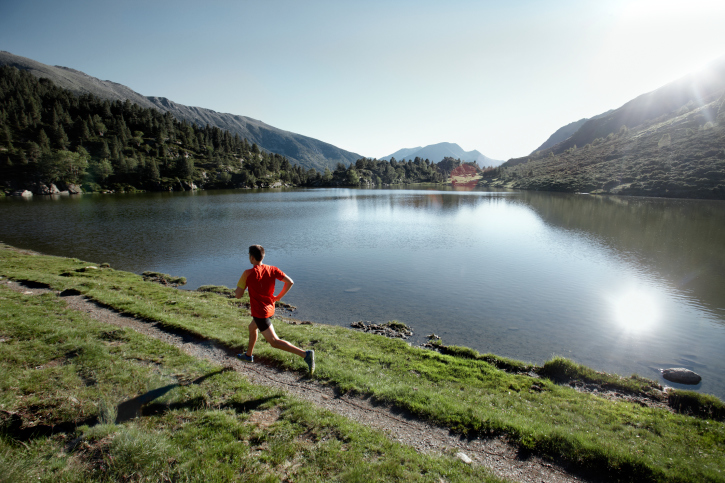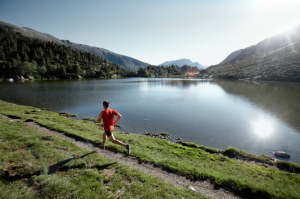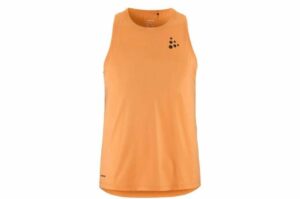Slowing down after 40

 The older I get, the faster I seem to walk without really getting anywhere. I mean, my feet move faster, but it takes me longer to reach the destination than it did 10 years earlier. If it was happening only when I walk, I wouldn’t give it a thought. Alas, it also happens when I run, and that’s upsetting.
The older I get, the faster I seem to walk without really getting anywhere. I mean, my feet move faster, but it takes me longer to reach the destination than it did 10 years earlier. If it was happening only when I walk, I wouldn’t give it a thought. Alas, it also happens when I run, and that’s upsetting.
Somehow I ran my personal best during my very first marathon and have been trying unsuccessfully to better the time ever since. Chalk it to inexperience — I never heard of the “wall” back then and never felt the real pain like the one that hit me in the last few kilometres of the race. So, instead of fretting about not having enough energy and avoiding the bonk, I simply gritted my teeth and ran through it. In later attempts, when I knew what was coming, I did everything the more experienced runners do: carbo-loaded, hydrated, took my gels in regular intervals, watched my pace. I still hit the wall more often than not. Maybe not knowing what’s coming is the best mind-preparation for a marathon. After that first race, you can’t trick your mind, or your body, to think it’s just another run.
Of course, there’s a power in knowing: you can prepare yourself physically and mentally for what’s coming. In theory, the more experience we gather, the better we should run. So, why on earth am I still getting slower?
Pete Magill, the fastest-ever American at 5K and 10K for age groups over 50, gives an explanation in an article for Competitor: it’s all in the stride. According to recent studies, after the age of 30, the length of our stride decreases by about a per cent each year. Our cadence, which is the number of steps per minute, stays the same. Master runners manage to preserve their optimal cadence into their 70s and 80s, but by then the length of their stride had decreased by about 40 per cent. Most older runners try to compensate for the loss of the stride length by increasing the cadence. That’s why we often see older guys running with a strange quick-shuffle.
Since I’m turning 50 next year, my stride had been shortening for the past 20 years. Let’s say that the rate of regression is less aggressive in the beginning of the decline, and for the ease of this calculation I’ll presume that my stride had shrunk by 10 per cent since my prime. I’m a tall runner with cadence of 164 steps per minute and my average stride is 1.2 metres long. On a 10K run I would take about 8,300 steps. If my steps are 10 per cent shorter, that means on a 10K run I lost about 840 metres just on the stride length. Translated into time, I lost about 3.5 minutes of my 10K time. So, if I wanted to run 10K at the same speed I used to, I would need to take about 700 steps more and jam them in 3.5 minute less time! Soon I will have to join the quick-stepping squad of oldies!
But, there’s no reason to despair just yet. The shortening of the stride is ascribed to weakening muscles and changes in neurological paths. Our distance running keeps the slow-twitch muscle fibre, which is responsible for endurance, in good shape, but neglects the fast-twitch fibre, responsible for speed and strength. Sprints are the activity where the fast-twitch fibre works the most, and incorporating speedwork into training will delay its decline.
We also have receptors built into the muscles, called muscle spindles. They are tiny sensors which monitor the length of the muscle during the run, so when the muscle stretches, the spindles send signals to your nervous system to contract the muscle and prevent overstretching. As we age, the muscle spindles get overly protective and limit the length our muscles can stretch, thus effectively shortening our stride. Like everything else, they too can be trained to let us stride longer by doing many repeats with faster, longer strides at the pace of a middle distance, like 1,500 and 3,000 m. If it sounds suspiciously like speedwork again, that’s exactly what it is.
What a fine irony aging as a runner is! The only way to slow the process of slowing down is to speed up, or rather include more speedwork in your runs. For runners who are still many seasons away from the aging blues, adding speedwork could mean staving off this stride-shortening predicament.

